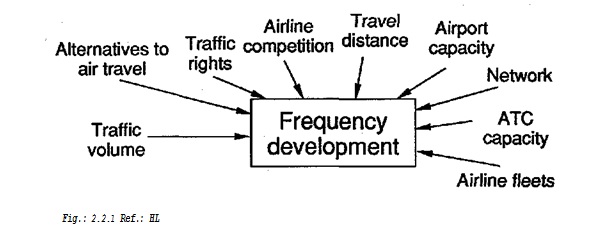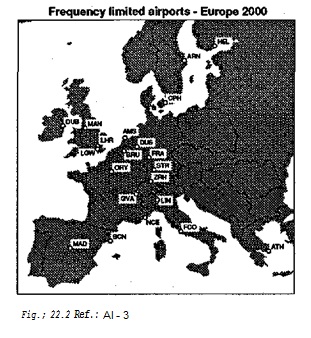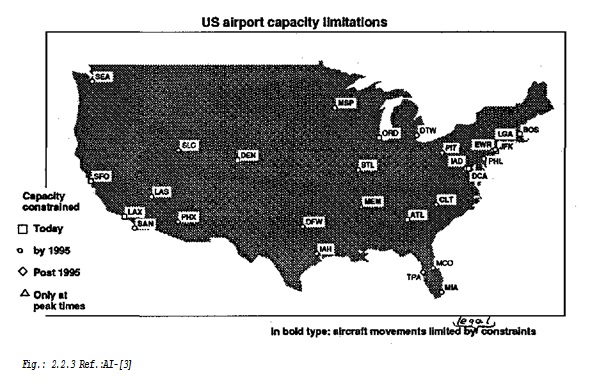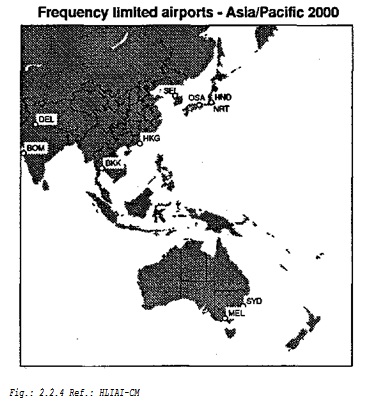Frequency development influences 20% of passenger traffic growth. It depends on:

Fig.: 2.2.1 Ref.: HL
Traffic volume and frequency growth influence each other as already explained.
Alternatives to air travel are also explained in the previous section.
Traffic rights lead to pool agreements that enable airlines to fix a market split based on given frequency or capacity offerings. The legalisation increases competition, as a result of liberalisation, it encourages higher frequency levels; curfews have a depressing effect on aircraft utilisation.
Airline competition affects the number of frequencies by encouraging a high number of regional, and more international direct flights to be attractive. They also fly high regional frequencies to block gates. The blocked gates ensure that there are no free spaces available for other airlines. Examples of this are just appearing in Europe and will increase with the start of the single EC market.
The longer the travel distance the lower the demand for frequency and vice versa.
Airport capacity will be one of the main frequency limitations. Staying at today’s size standard, the increase in travel demand means more aircraft in service. The result will be even more congestion. The only marginal decreases in frequency would be with aircraft exceeding the size of today’s capacity. There will be future spending, either by increasing the airport areas and building new runways or by enlarging the airside facilities for UHCA.
The next two pictures show the constrained airports in Europe and North America till the year 2000 assuming an average annual growth rate of 4.9% for Europe and 4.3% for North America.

Fig.; 2.2.2 Ref.: AI-[3]

Fig.: 2.2.3 Ref.:AI-[3]
In addition to the known constraints in the airport environment in Europe and North America the operational infrastructure faces increasing difficulties to meet the demand growth (8.4%) in the Asia/Pacific region. “Congestion is the most serious threat to future growth in the region” (OAA, Orient Airlines Association).
The limitation effects of almost all major Japanese airports are now also visible in Australia (SYD,MEL) and at other main centres in the region. Although several airports are expanding (OSA, SEL, BKK, HKG, SYD), the constraints will continue because of the above mentioned average growth, technical installations, communication difficulties and legal aspects.

Fig.: 2.2.4 Ref.: HLIAI-CM
Network development structure, such as hub-and-spoke or direct flights, affects utilisation, frequency and aircraft size.
ATC capacity will put a physical limit on the expansion of aircraft movement growth. The limits appear through:
- -Large number of different ATC systems (especially Europe
- -Lack of central planning and co-ordination
- -Discrepancy between airport and airspace capacity at major airports
- -Differences in technology/equipment standard
- -between countries
- -between air and ground communication
- -Changing traffic mix
- -scheduled, charter airlines
- -General aviation, military
- -peak periods
- -Historical staggering of aircraft -Air traffic controller stress
Existing Airline fleets will have to be operated for a certain time irrespective of whether their current composition is ideal or not.
